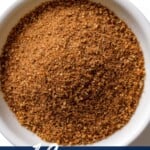This post may contain affiliate links. Please read our disclosure policy.
Cumin is a little seed that packs a big flavor into a variety of dishes from several cuisines. This spice is a must-have ingredient in your kitchen! Read more below to find out why.
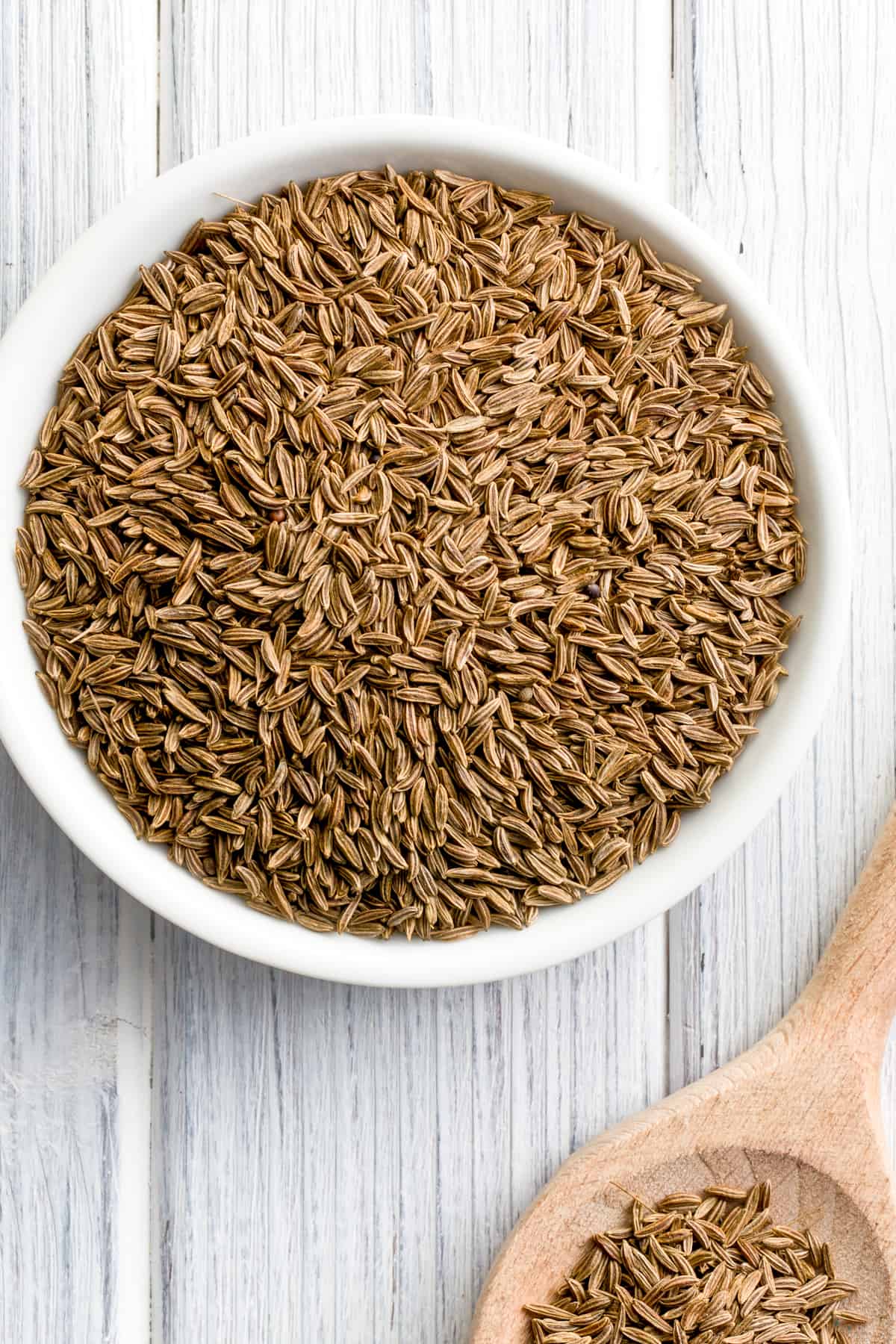
Cumin is a spice that belongs to the parsley family. More specifically, it comes from the dried seed of an herb called Cuminum cyminum. It is featured in many Latin American, Indian, and Middle Eastern dishes and other cuisines. Often, cumin seeds are ground into a brownish-yellow powder for cooking, but whole seeds are also used in some recipes (usually in Indian dishes). It is often included in spice blends, like chili powder or curry powder.
Wondering how to pronounce the word cumin? It is frequently pronounced “kyoo-min,” but you could also say “koo-min” if you prefer.
What Does Cumin Taste Like?
There are different types of cumin with slightly different tastes, but overall, it is a warm, earthy, nutty spice with some bitterness to it. It’s often used in savory dishes, but it can be incorporated into sweet ones too (i.e. with sweet potatoes, fudge, cookies, etc.).
Types of Cumin
Let’s differentiate between some common types of this popular spice:
- White (Cuminum cyminum). This is the most popular and commonly used kind of cumin – it has a milder taste than Black or Bitter cumin.
- Black (Nigella sativa). A spicier version with hints of sweetness.
- Bitter. As the name suggests, this is the most bitter of the three spices.
Whole Cumin vs Ground Cumin
As mentioned above, you can cook with both whole cumin seeds and ground cumin. The seeds should be roasted because this is what brings out the flavor and makes them fragrant. Ground cumin is made by taking these roasted seeds and grinding them into a powder. Keep in mind that in this powdered form, it loses its flavor faster. The best way to preserve it is to keep it in an airtight container at room temperature, but it will need to be replaced every so often.
What Are the Health Benefits of Cumin?
Cumin is known to provide a couple of important health benefits to your body. According to WebMD, It assists your digestion, it’s a great source of iron, and it has plant compounds that can work as antioxidants to stabilize free radicals, or lone electrons. (These lone electrons can cause inflammation in the body, otherwise.)
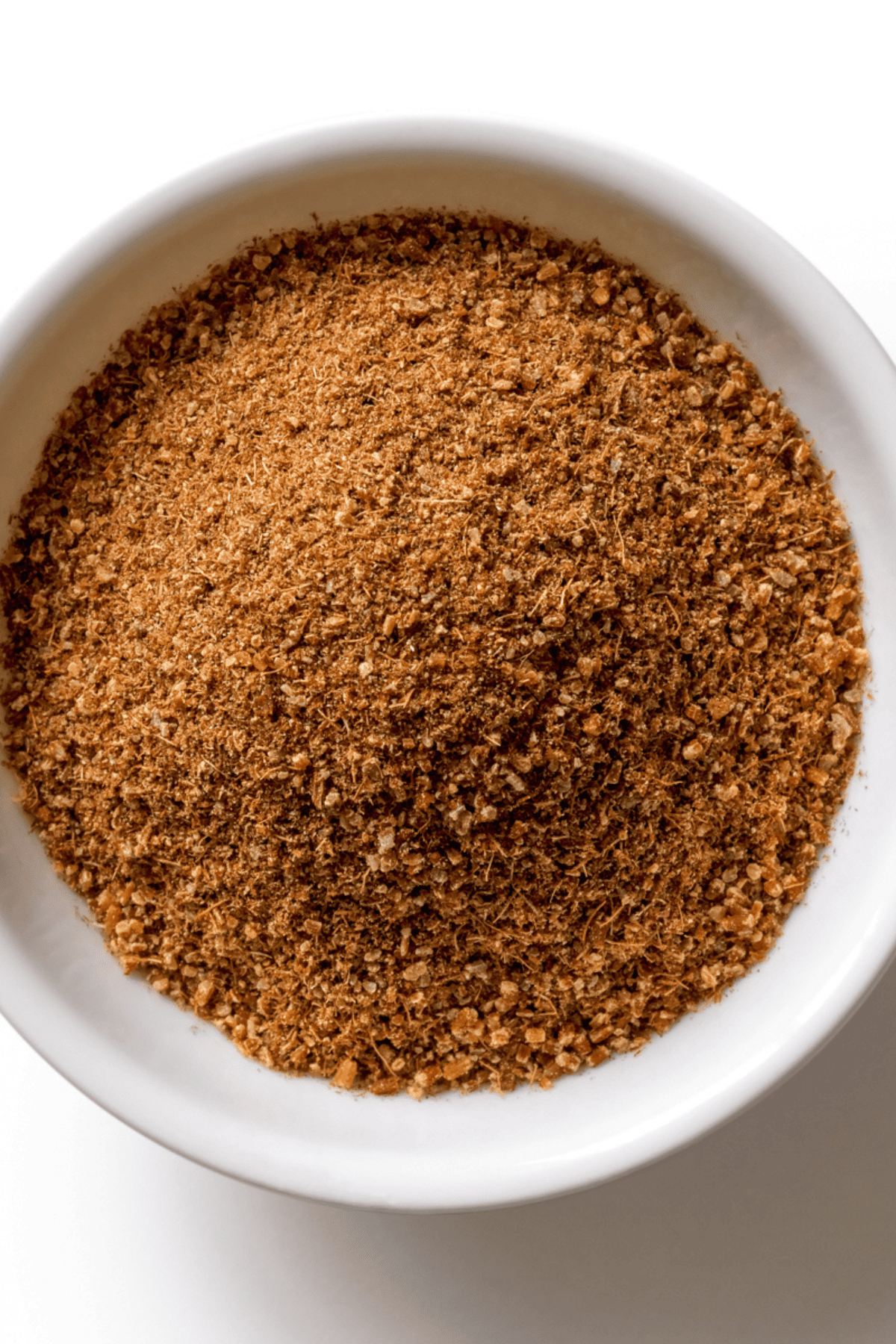
What is the Best Cumin Substitute?
Now that you’re an expert on this spice, let’s talk about what you can use if you need to replace it. These are the most straightforward substitutes:
Ground Coriander
- Coriander is also in the parsley family, and it has a similar earthy flavor. It is a bit milder, though, and lacks the warmth/heat that cumin can bring to a dish. Thus, when subbing with coriander, use half of the amount directed (i.e. 1/2 teaspoon for every teaspoon or 1/2 tablespoon for every tablespoon) and consider adding some chili powder if you want that extra spiciness.
Caraway Seeds
- Another member of the parsley family! You can replace cumin seeds with caraway seeds, or swap ground cumin for ground caraway. Use the same ratio as above (1:2) when making substitutions. Note that caraway seeds have a citrusy but milder flavor, just like ground coriander.
Chili Powder
- Chili powder is a combination of spices that includes cumin, paprika, garlic powder, ground cayenne, and more. Thus, if it is used as a replacement, it will add extra flavors and a red hue to whatever you’re making. It should be substituted with the same 1:2 ratio mentioned above, and works best in Mexican/Latin American dishes.
Garam Masala
- This is another blend of spices where cumin is a primary ingredient, but it also includes ingredients such as coriander, cinnamon, nutmeg, and more. It will add warmth and citrusy flavors to your dish, and is best substituted into Indian meals with the aforementioned 1:2 ratio.
Taco Seasoning
- Yet another blend of spices that contains cumin (usually in the chili powder), garlic powder, crushed red pepper flakes, oregano, etc. It also tends to include a lot more salt, which is something to be aware of. Taco seasoning is great for Tex-Mex and Mexican recipes, and can be substituted 1:2 or 1:1, depending on how spicy you like things to be.
Curry Powder
- Curry powder typically includes cumin, turmeric, coriander, ginger, and cinnamon, among other ingredients. It will add a bright yellow color and some subtle sweetness to your cooking, along with those desired warm, earthy flavors. Curry powder works well as a replacement in Indian and Indonesian-style recipes. Try using the 1:2 substitution ratio, and then adjust from there if you’d like to add bolder flavor.
Paprika
- Paprika will add a bold, red color to your cooking, but it can still work well as a cumin substitute! It is more smoky than spicy, so it adds a nice, mild warmth to whatever you’re making. It’s an especially great replacement in Mexican recipes, and can be substituted 1:2 (like all of the above) to begin with, unless you’d like to add more.
What is Cumin Used For?
- You’ll find cumin in chilis, stews, soups, and even baked goods. Of course, it’s often incorporated into marinades, spice rubs, and sauces as well. With regard to meat, it works really will with beef, pork, chicken, and fish. Basically, it doesn’t matter what you’re making for dinner – you can definitely find a way to put some of this spice in it!
13 Recipes That Use Cumin
Looking for new ways to cook with cumin in your own kitchen? Here are some of my favorite recipes that feature this special spice!

Jeera Rice (Cumin Rice)

Tomato Avocado Corn Salad with Lime Cumin Vinaigrette

Lime Cumin Chicken Salad with Tomatoes, Olives and Queso Fresco

Easy Cheesy Skillet Burritos

Instant Pot Puerto Rican Pernil

Taco Bowls

Indian Samosa Chaat

Chicken Taco Soup

King Ranch Chicken Casserole

Country-Style Pork Ribs
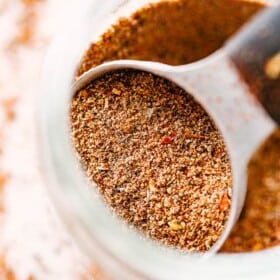
Homemade Taco Seasoning
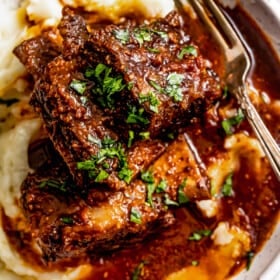
Instant Pot Short Ribs

